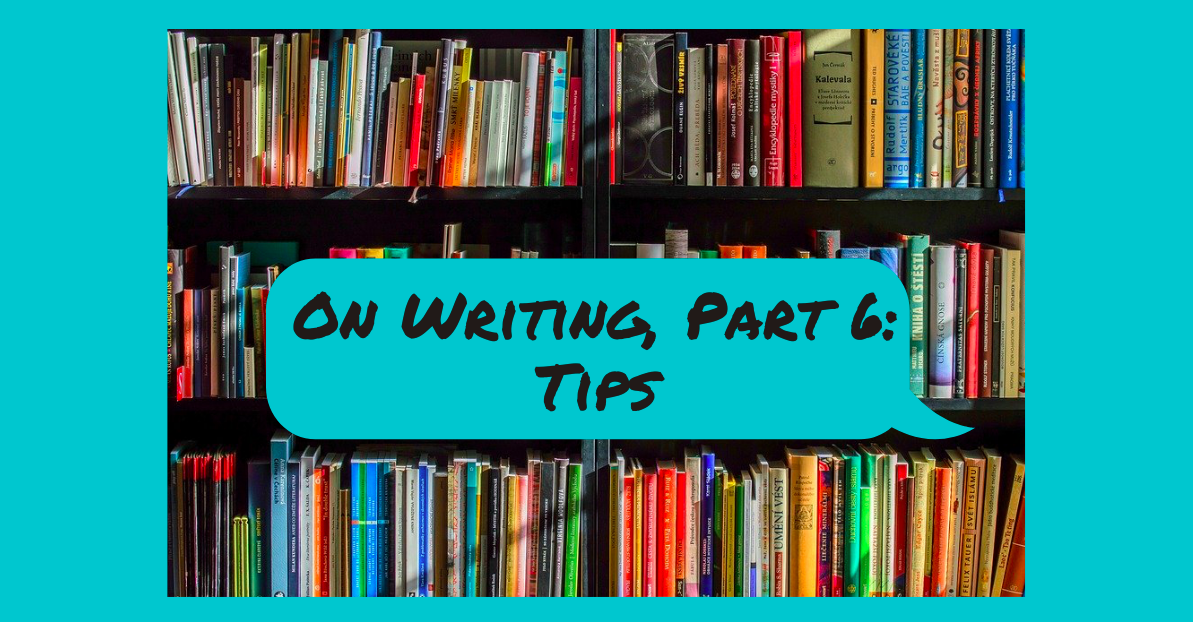Because everyone loves a good story
On Writing, Part 6: Tips

Backstory, research, and pace.
If those words don’t trigger a high school English déjà vu, then I don’t know what will. (All right, I do: try conjunctive adverb, parse, and pop quiz. I shudder at the thought.) But even though the topic sounds a little academic, I think you’ll find it ultra-practical. Take a look!
WHERE LESS IS MORE
Back Story
Believable characters need to have some back story. I mean, even eight-year-old Ramona Quimby came from somewhere. Relating the pertinent details will help our readers understand who they’re reading about. As writers, part of our job is to know the back story of our characters, even if most of it never directly enters the story. The nitty-gritty about our hero’s history may not make a thrilling chapter, but it certainly helps us understand how he would react to his mother, his job, and his crises.
That being said, Stephen King crystalizes some pertinent advice for us: “The most important things to remember about back story are that (a) everyone has a history and (b) most of it isn’t very interesting” (227). There you have it, folks. Keep back story in the back, and your readers will thank you.
Flashback
Two other facets of back story are flashback and recap. The flashback may be necessary from time to time, especially if you’re doling out information slowly so you can keep up suspense and surprise. However, if it’s not done well it may attract undue attention to itself and make your story feel clunky. King personally dislikes flashback, saying that it reminds him of those hazy transitions in old movies (and 90’s sitcoms, I might add), but I think it can work all right as long as it’s used sparingly and well.
Recap
The recap is used in series where the author wants to fill you in on what you’ve missed or forgotten from the previous books. This is one of my pet peeves, actually. I always feel insulted when an author spends the first few chapters reminding you of the whole previous saga. It feels like being told you can use a cheat sheet on a test you spent a long time studying for. You don’t need it, and frankly it’s pandering to the nitwits who didn’t prepare.
King feels the Harry Potter series recaps previous books “effortlessly,” but even those tick me off. I mean, if you don’t know that the Weasleys are a big family of poor redheads by book six, why are you even reading it? All right, all right. I’m about to get worked up over here, so we’ll just move on. In summary, be sparing with your back story, and everything should work out just fine.
RESEARCH
As the age-old adage goes, “Write what you know.” Sure, that may be the simplest and most believable thing you can write about. But what if you want to set your story in ancient Rome, and your only knowledge of the era comes from a junior high perusal of the movie Ben-Hur? Well then, my friend, it’s research time.

Believable stories require believable characters and settings. Believable, mind you—not necessarily realistic. Like Tolkien, you can write about elves and hobbits in Middle Earth, but it had better be believable within your story. Or you can choose a real setting that is unfamiliar to you, as long as you put in some time at the library. Please don’t include all your research in the story itself, though; just make sure your details are accurate enough to please Professor Knowitall when he reads it. “Remember that you are writing a novel, not a research paper,” says King. “The story always comes first” (231).
PACE
If you’re using back story and research sparingly, then the pace of your story is sure to benefit. Pace, or “the speed at which a narrative unfolds,” is a tricky thing (220). It’s mostly personal preference, and each person has a different preference. Some like break-neck thrillers while others prefer leisurely, sprawling narratives. Whichever you prefer as a writer, just follow the advice of Elmore Leonard and “leave out the boring parts.”

Before King was rich and famous, he got lots of rejection slips from magazines who didn’t want his short stories. But one of the slips had a hand-written note that changed his life. It said: “Not bad but PUFFY. You need to revise for length. Formula: 2nd Draft = 1st Draft – 10%. Good luck.” When King began applying that formula, his stories began selling. Think there’s no fat to trim in your story? It may be time to ask an unbiased outside source for some feedback. “Every story and novel is collapsible to some degree,” King says (223). As a classic rambler, I know this to be true. Trim and trim again. The story will only get better.
EASIER SAID THAN DONE
Of course it’s simple for me to prescribe less back story, more research, and better pace. What’s tricky is applying it. I’m in the middle of writing a novel myself, and I can already think of six dozen ways to utilize this advice. A dismal thought, and yet not without hope. May you find the same to be true of your writing as well.
Source:
King, Stephen. On Writing: A Memoir of the Craft. Scribner, 2000.

Enjoyed! Thanks Emily.